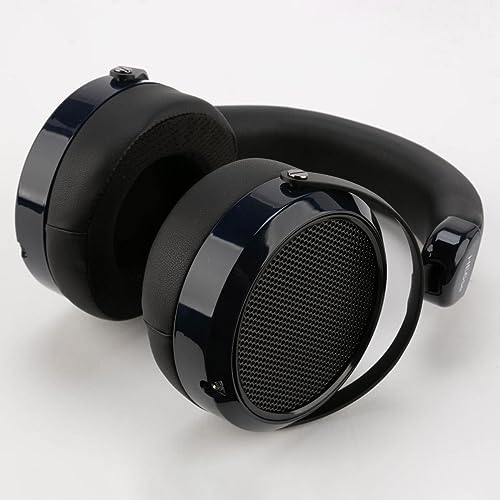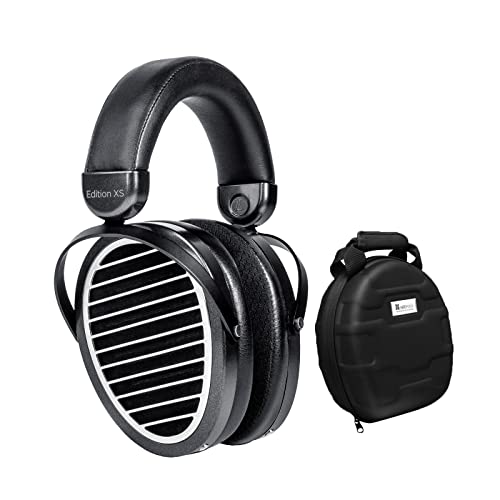10 Places To Find Planar Iem Vs Dynamic
페이지 정보
작성자 Tonja 작성일24-04-01 22:58 조회5회 댓글0건관련링크
본문
Planar IEM Vs Dynamic IEM
Planar magnetic headphones, unlike moving coil models that utilize the voice coil to move the diaphragm once activated, utilize an elongated diaphragm that is charged. This ensures superior image structure and clarity.
Some models, such as the Audeze LCD-4 or HiFiMAN Susvara are also great at capturing rapid transients.
Cost
The primary difference between the planar IEM and a dynamic IEM is the cost. Planar magnetic drivers, which are more complex than traditional dynamic drivers and employ a flatter diaphragm with more surface area, are usually more expensive. They are also more efficient, and they produce superior clarity in high-frequency. This means that they are able to easily scale up to higher resolution sources such as Hi-Fi players and Amps. This makes them an excellent choice for music lovers with an extensive library.
In contrast the dynamic driver makes use of a moving coil to produce sound waves. This design is cheaper to make, but it can cause distortion at high volume. It's important to take into account your budget and personal preferences prior to selecting an IEM.
Many companies offer IEMs with a hybrid dynamic/planar driver configuration. This allows for a balanced signature of sound that can please listeners with different tastes. It produces a full spectrum soundstage, and has excellent imaging. The Seeaudio Rinko and HIFIMAN HE400SE: Premium Open-Back Headphones With Planar Magnetic Technology (Www.Headphonesshop.Uk) Sundara are two of the best examples. These IEMs combine both technologies to deliver a powerful, spacious sound. They also feature great bass response and high-quality midrange clarity. They are also comfortable to wear for long listening sessions and are easy to put into your ear. They require a lot of power to drive so you might need to utilize an amplifier.
Bass Response
Generally speaking, planar magnetic headphone headphones tend to have better bass response and less distortion than their dynamic counterparts. They also offer more extension capabilities for lower frequencies. Contrary to this modern high-end dynamic drivers often sound more pronounced and have a certain sound that some listeners like.
While both driver types produce excellent bass, the distinction is that a dynamic driver produces it by vibrating the diaphragm and a voice coil together, whereas the planar magnetic driver utilizes conductors that run directly on the flat surface of the diaphragm. This allows the diaphragm to respond equally to magnetic fields, and eliminates vibration issues that can cause problems for a dynamic driver.
In addition, a plane magnetic headphone's diaphragm can be much larger than the diaphragm of a dynamic driver. This is a major reason in their superior performance and allows them to produce more bass with less distortion. They also have quick response times, which makes them perfect for reproducing transients as well as other fast-moving sounds.
The downside is that they are more expensive to produce, and therefore cost more than dynamic drivers. They are also heavier and require more power to uniformly move their large diaphragms. These issues can hinder their availability, especially in IEMs. However, a number of companies have successfully developed affordable IEMs that utilize planar magnetic drivers, such as the Seeaudio Rinko and LETSHOUER Z12.
 Another great feature of the planar magnetic driver is its capacity to create a vast soundstage, and it can effortlessly fill your ears with a full and full-bodied experience. Certain models also give you the impression of space and depth that makes them feel like you are listening to music in a room.
Another great feature of the planar magnetic driver is its capacity to create a vast soundstage, and it can effortlessly fill your ears with a full and full-bodied experience. Certain models also give you the impression of space and depth that makes them feel like you are listening to music in a room.
Frequency Response
Planar drivers feature a flat diaphragm which allows them to reproduce higher frequencies than dynamic drivers. This means that they provide more clarity and fidelity, especially in the mids and highs. They also have lower distortion levels that can cause the sound to deviate from the original recording.
A voice coil is attached to a cone-shaped diaphragm, which vibrates when an electrical signal is applied. This causes the driver's distortion and can impact the overall sound quality. Planar magnetic drivers use the conductive surface placed on the flat surface and reacts more uniformly to electrical signals.
These differences make planar drivers more precise and reliable, which in turn delivers a much better listening experience. This is one of the reasons that many audiophiles prefer IEMs with planar designs.
Another advantage of planar drivers is their ability to create a natural soundstage. The flat driver can create an omnidirectional wavefront rather than a spherical oriented one. This creates an immersive soundstage that makes listeners feel as if are in a recording studio or concert hall.

Planar magnetic headphones, unlike moving coil models that utilize the voice coil to move the diaphragm once activated, utilize an elongated diaphragm that is charged. This ensures superior image structure and clarity.
Some models, such as the Audeze LCD-4 or HiFiMAN Susvara are also great at capturing rapid transients.
Cost
The primary difference between the planar IEM and a dynamic IEM is the cost. Planar magnetic drivers, which are more complex than traditional dynamic drivers and employ a flatter diaphragm with more surface area, are usually more expensive. They are also more efficient, and they produce superior clarity in high-frequency. This means that they are able to easily scale up to higher resolution sources such as Hi-Fi players and Amps. This makes them an excellent choice for music lovers with an extensive library.
In contrast the dynamic driver makes use of a moving coil to produce sound waves. This design is cheaper to make, but it can cause distortion at high volume. It's important to take into account your budget and personal preferences prior to selecting an IEM.
Many companies offer IEMs with a hybrid dynamic/planar driver configuration. This allows for a balanced signature of sound that can please listeners with different tastes. It produces a full spectrum soundstage, and has excellent imaging. The Seeaudio Rinko and HIFIMAN HE400SE: Premium Open-Back Headphones With Planar Magnetic Technology (Www.Headphonesshop.Uk) Sundara are two of the best examples. These IEMs combine both technologies to deliver a powerful, spacious sound. They also feature great bass response and high-quality midrange clarity. They are also comfortable to wear for long listening sessions and are easy to put into your ear. They require a lot of power to drive so you might need to utilize an amplifier.
Bass Response
Generally speaking, planar magnetic headphone headphones tend to have better bass response and less distortion than their dynamic counterparts. They also offer more extension capabilities for lower frequencies. Contrary to this modern high-end dynamic drivers often sound more pronounced and have a certain sound that some listeners like.
While both driver types produce excellent bass, the distinction is that a dynamic driver produces it by vibrating the diaphragm and a voice coil together, whereas the planar magnetic driver utilizes conductors that run directly on the flat surface of the diaphragm. This allows the diaphragm to respond equally to magnetic fields, and eliminates vibration issues that can cause problems for a dynamic driver.
In addition, a plane magnetic headphone's diaphragm can be much larger than the diaphragm of a dynamic driver. This is a major reason in their superior performance and allows them to produce more bass with less distortion. They also have quick response times, which makes them perfect for reproducing transients as well as other fast-moving sounds.
The downside is that they are more expensive to produce, and therefore cost more than dynamic drivers. They are also heavier and require more power to uniformly move their large diaphragms. These issues can hinder their availability, especially in IEMs. However, a number of companies have successfully developed affordable IEMs that utilize planar magnetic drivers, such as the Seeaudio Rinko and LETSHOUER Z12.
 Another great feature of the planar magnetic driver is its capacity to create a vast soundstage, and it can effortlessly fill your ears with a full and full-bodied experience. Certain models also give you the impression of space and depth that makes them feel like you are listening to music in a room.
Another great feature of the planar magnetic driver is its capacity to create a vast soundstage, and it can effortlessly fill your ears with a full and full-bodied experience. Certain models also give you the impression of space and depth that makes them feel like you are listening to music in a room.Frequency Response
Planar drivers feature a flat diaphragm which allows them to reproduce higher frequencies than dynamic drivers. This means that they provide more clarity and fidelity, especially in the mids and highs. They also have lower distortion levels that can cause the sound to deviate from the original recording.
A voice coil is attached to a cone-shaped diaphragm, which vibrates when an electrical signal is applied. This causes the driver's distortion and can impact the overall sound quality. Planar magnetic drivers use the conductive surface placed on the flat surface and reacts more uniformly to electrical signals.
These differences make planar drivers more precise and reliable, which in turn delivers a much better listening experience. This is one of the reasons that many audiophiles prefer IEMs with planar designs.
Another advantage of planar drivers is their ability to create a natural soundstage. The flat driver can create an omnidirectional wavefront rather than a spherical oriented one. This creates an immersive soundstage that makes listeners feel as if are in a recording studio or concert hall.

댓글목록
등록된 댓글이 없습니다.

